A Day in the Life of a Samaritan's Purse Fire Volunteer in Lahaina, Maui
Or, at least a day in the life of THIS one!
NOTE: A media blackout remains in effect in the Lahaina fire area so I am taking extreme care not to post anything that may give clues to to the identities of any property or identity. Still, the story of Lahaina is important and ongoing and we should make every effort to remember the people who continue to suffer here.
Glossary of Terms
Blue Shirts - Volunteer chaplains from the Billy Graham Association.
Chaplain - Volunteers (blue shirts) who have gone through training with the Billy Graham Association and deploy to disaster sites with the volunteer teams (orange shirts). I learned that they are primarily here to serve us, the volunteers; we’re their first priority. Then they focus on the residents who have lost their homes. And their third priority is the community of Lahaina at large.
Deployment - in Samaritan’s Purse parlance, these are volunteer responses to disasters in the U.S. sometimes for direct response to the devastation of the disaster, and sometimes to rebuild afterwards. In Lahaina, we often greeted each other asking what deployment this was for each of us. Lahaina, Maui, is my first deployment. Many here have deployed at least five times, some upwards of ten, and this is the twentieth deployment for one team leader. She’s responded to many other fires, floods, and hurricanes in the country. One deployment, many say, is all it takes to become hooked. I think I’m hooked.
Hot Zone - These are the sites in the burn zone in Lahaina to which teams are assigned where the owners are returning for the very first time to view the remains of their homes. They have not been allowed back to their homes prior to this day. Team leaders will approach the owners and offer our help in sifting through what remains. It is potentially a highly emotional zone because of these first views by the residents/owners. I am primarily assigned to Hot Zones on this deployment to Lahaina.
N100 Respirator Masks - filter 99.97% of particulate matter. Ours had pink filters reusable up to ten times. We washed our masks after work everyday at the mask washing station.
Orange Shirts - Samaritan’s Purse volunteers here in Lahaina; me!
Shave Ice - not ‘shaved ice.’ This is a wonderful Hawaiian sweet treat. It may look like a snow cone but it is so much better: rather than the crushed ice, shave ice is fluffy like snow, with melt-in-your-mouth flakes that are flavored with every kind of syrup under the sun, according to your fancy. Try it with a ‘capper’ of condensed milk and/or ice cream on the bottom.
Trailing Zone - These are the sites in the burn zone which have already been viewed by the owners. They have made an appointment or arrangement with Samaritan’s Purse for us to return and sift in specific areas of their home site and search for specific items. Teams are sent daily to the trailing zones.
Tyvek Suit - A lightweight but protective personal protective equipment in the style of a coverall. Tyvek suits are made to protect workers from aerosols, hazardous dry particles, microorganisms, and non-dangerous and dangerous liquid splash. They are typically made with three layers of protection: (1) a 12 pt Bemis vinyl that blocks 97% of aerosol particles, (2) a layer that reduces the risk of airborne particulate matter, fibers and pathogens from bonding to clothing for long periods, and (3) a water repellent finish on both sides to assist in keeping workers dry when they become exposed to liquids. Our Tyvek suits had hoods and booties and ranged in size from Small to 4X. The residents/owners of the destroyed homes have also been supplied Tyvek suits I believe by the county or perhaps the EPA. Wearing lightweight clothing underneath the suit, like our Samaritan's Purse orange t-shirt and scrub pants works nicely.
Morning
2:50am - Wake (my little Fitbit watch is AWESOME at vibrating a little alarm to wake me without waking any of the other 13 women in our tent). Roll over, close eyes. Finally rise out of bed at 3:10am. Slip on flip-flops strategically placed so that they’re slip-on-able when my feet hit the floor. Slip on my denim shirt over my t-shirt and leggings and grab my cosmetic bag and book bag strategically laid out on the bunk beneath me the night before to make minimal noise for my sleeping tent mates. Quietly make my way out of the tent to the port-a-potty.
3:15am - Stand at one of the outdoor communal sinks and brush teeth, wash face, and apply sunblock and (minimal) makeup. I have a skin condition called melasma on my face which results in dark brown patches on my cheeks, jawline, and chin and I’m used to trying to hide this under makeup most days, but it will be of no use here. Makeup is no match for Lahaina sweat and respirator masks. (It might be good practice not to try to hide under too much makeup in general! My daughter, Jacque, and I had a talk about this before I left on this trip. She’s wise.) Tousle my short silver hair. No curling iron - we’ve been warned to leave them at home. They’ll take out the generators. This is another strange thing - I try not to leave home with my fine, straight hair uncurled…Ah, well…Becky and Tim, our camp cooks, are already up and beginning preparations for our breakfast.
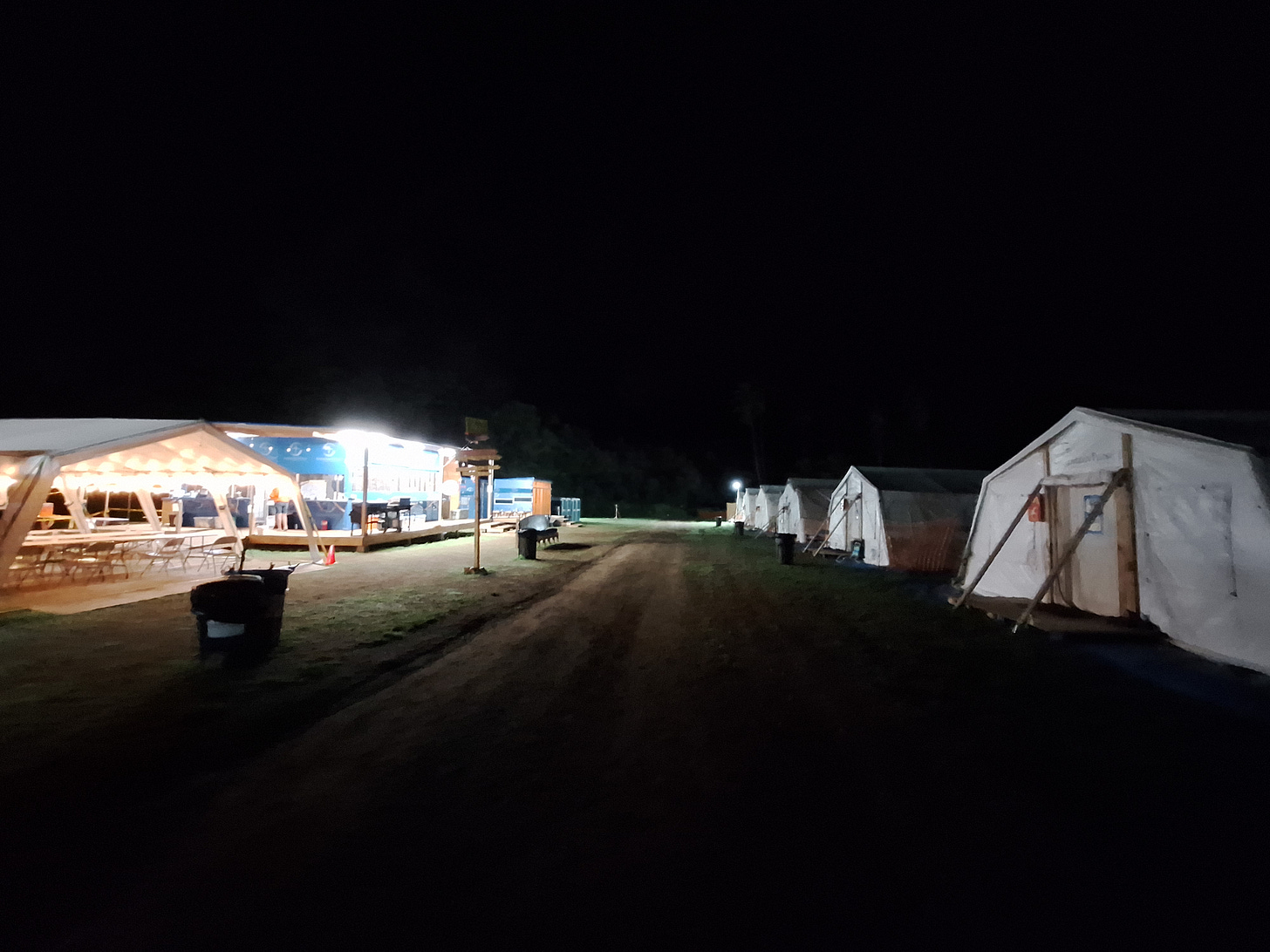
3:45am - Settle in at one of the long tables in the dining tent with my journal, Bible, and Mere Christianity by C.S. Lewis (the book I’m currently reading with my morning Quiet Time). Ahhh…Quiet Time…
4am - Coffee’s ready, I take my first cup with half-and-half and hopefully have a quick chat with our cook Becky who fast becomes a great friend. I love our quick connections in the morning.
4:15am - Check monitor for my daily assignment and whose team I’m on. I’ll be on Alan’s team everyday. Sometimes his wife, Susan, will co-lead.
4:30am - Other volunteers, already in their orange shirts, start trickling into the dining tent. There are men and women, and many, like me, are up with their journals and Bibles for some Quiet Time before the day officially begins. My friends, Jeff and Fernando, both of whom came in on the same airport shuttle as I did, are both intently studying scripture. I cannot get over seeing men studying the Bible so intently. I realize I have never ever seen a man, much less men, having a personal time of prayer and devotion with God. It is a wonder to me and it’s strange to witness, deeply touching and beautiful. It changes the shape of the world somehow…
5am - Time to make our sack lunches. There’s sandwich fixings, fruits, and snacks. My favorite is turkey, salami and cheese with mustard and mayo on wheat bread. Peanut butter and jelly are definitely tempting, too. When we’re in the queue to make lunches (and for breakfast and dinner), it’s “more walkie walkie” and “no talkie talkie” to keep the line moving. Fat chance. We’re always chatting in the food lines. We don’t mean to break the rules, and sometimes Tim scolds us, but “talkie talkie” comes naturally when you’re surrounded by really cool people from all over the country who are here for a common purpose. There is something about sharing an experience like this…
5:30am - Breakfast time…and devotions. Breakfast is good. VERY good! There is zero chance of losing weight on this trip. I pat my belly and make peace with this. A chaplain or other leader leads a devotion while we’re eating to focus our minds on God and what - and who - matters.
Workday
6:15am - My team boards our van. Alan drives the supply truck and leads us to our assigned site in the Hot Zone for the day.
6:30am - I have a little time on the way to the worksite to write some impressions in the little notebook I try to always have with me. One morning, the sunrise is too spectacular for words. There is a mountain to the east with an “L” I assume is for Lahaina. The mountains are beautiful.
7am - There’s a police checkpoint to enter the area of Lahaina affected by the fires. We are not allowed to take photos from this point on.
7:15am - We arrive at our designated neighborhood. We wait for the owners of the properties to drive in and our team leads approach them to offer our help. There are many who are appreciative of and desire our help. Sometimes the area is too dangerous for us to enter. Structurally, it might be too risky. But, in these areas, Alan says this place is ripe for the chaplains. The Hot Zone, particularly is ripe for the chaplains.
7:45-8am - An owner is ready for help and Alan returns to give us the go-ahead to don our suits and get ready. There is a particular bit of dread I have in putting the suit on, knowing the heat will be daunting. I start sweating buckets almost immediately. The nylon kerchief they give us to wet in ice water and wrap around our necks or heads is very welcome. There are even ice packs to put inside our suits. We women tuck them into our bras. The chill of the ice packs doesn’t last nearly long enough but we are grateful for whatever relief is available.
8am-11am or so - We work. Shoveling ashes into our sifters, one wide mesh and one finer mesh, and sifting through with our gloved hands, letting the ash fall out below the sifter, we search. After a few days, I feel like my eyes have gotten more sensitive to small and potentially precious things. My vision is more acute.
The heat is sometimes forgotten as we desperately look for items. We don’t find much. But, sometimes, sometimes…Alan found a gold and diamond wedding ring one day. A miracle.
We try to take breaks every 15 minutes to drink water, add electrolytes to our water bottles sometimes, rewet our neck/head wraps, take off our masks, and unzip and pull our Tyvek suits down to our waists. I think I have never been this sweaty and dirty in my life. I don’t want it any other way…
We work fifteen minutes at a time, then fifteen minutes break. Sometimes we alternate: while one group rests, the other works, and vice versa. The resting team often will spend time with the owner of the site which is a great gift for us. Sometimes the owners will laugh at a memory or something funny and this is better relief than an icepack down my front.
11am-ish - Lunchtime. Sometimes, we find a pretty spot near a beach for lunch, sometimes we eat on site. When was the last time I packed myself a sack lunch? Night shift when I was a nurse a long time ago, I think. Our team quickly bonds and break times are often spent deepening our connections to one another.
12pm-3pm-ish - Afternoon is generally a repeat of the morning except at a different property/worksite and the heat of the day bears down more strongly. The Lahaina temperatures are at about 80F degrees but the suits raise the temp for us to sauna levels. On one break, Alan pours the ice water from the ice chest where we keep our water bottles, over my new friend, Becca’s and my heads. It is glorious. Curling iron? I can’t believe I even considered bringing one!
3pm-4pm - Travel back to camp. Perhaps stop for shave ice. Shave ice is always, always a good idea!
Back at Camp - Afternoon/Evening
4pm - Back at camp, the routine after work for many of us is to head to the water, about a three-minute walk from camp. Before the trip, I determined to battle a water anxiety I’ve had for a number of years and I make it a point to be in the water everyday, even when the waves make me gulp with nervousness.

5pm - Salad bar time.
5:30-7pm - Dinnertime and share time.
7pm - Shower time and winding down time for a lot of us. Some of the night owls bring out cards and UNO and prepare to play for a bit. I thought I’d write but sleep wins out every night and, interestingly for this introvert, so does chatting with my new friends. I don’t want to isolate myself as much as usual. I find it’s important to hear stories, commiserate, even cry sometimes, with the people around me. It really is an unusually special environment, this camp near Lahaina.
8pm - Although lights out is at 10pm, I fall asleep not long after 8pm and sometimes even before. Ear plugs and an eye cover help and our tent is exceptionally considerate and kind to the early sleepers, too.
When anyone at anytime asks me how my day was I always reply,
“Long, hard…and beautiful.”





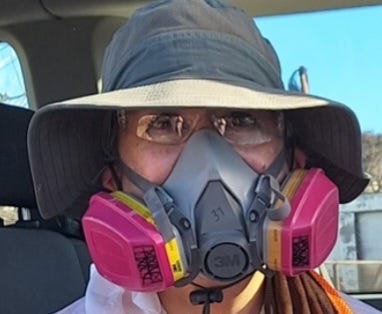

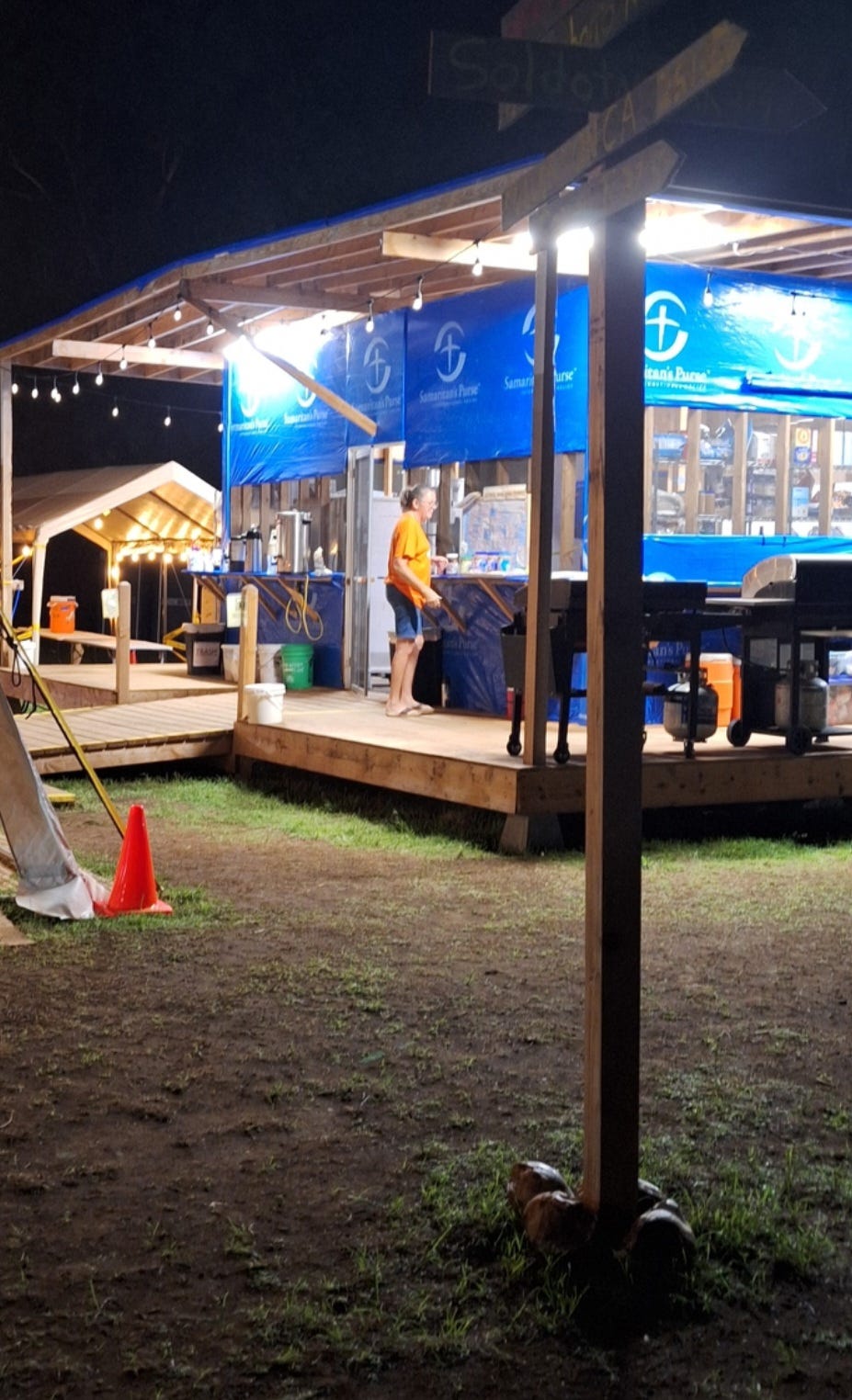



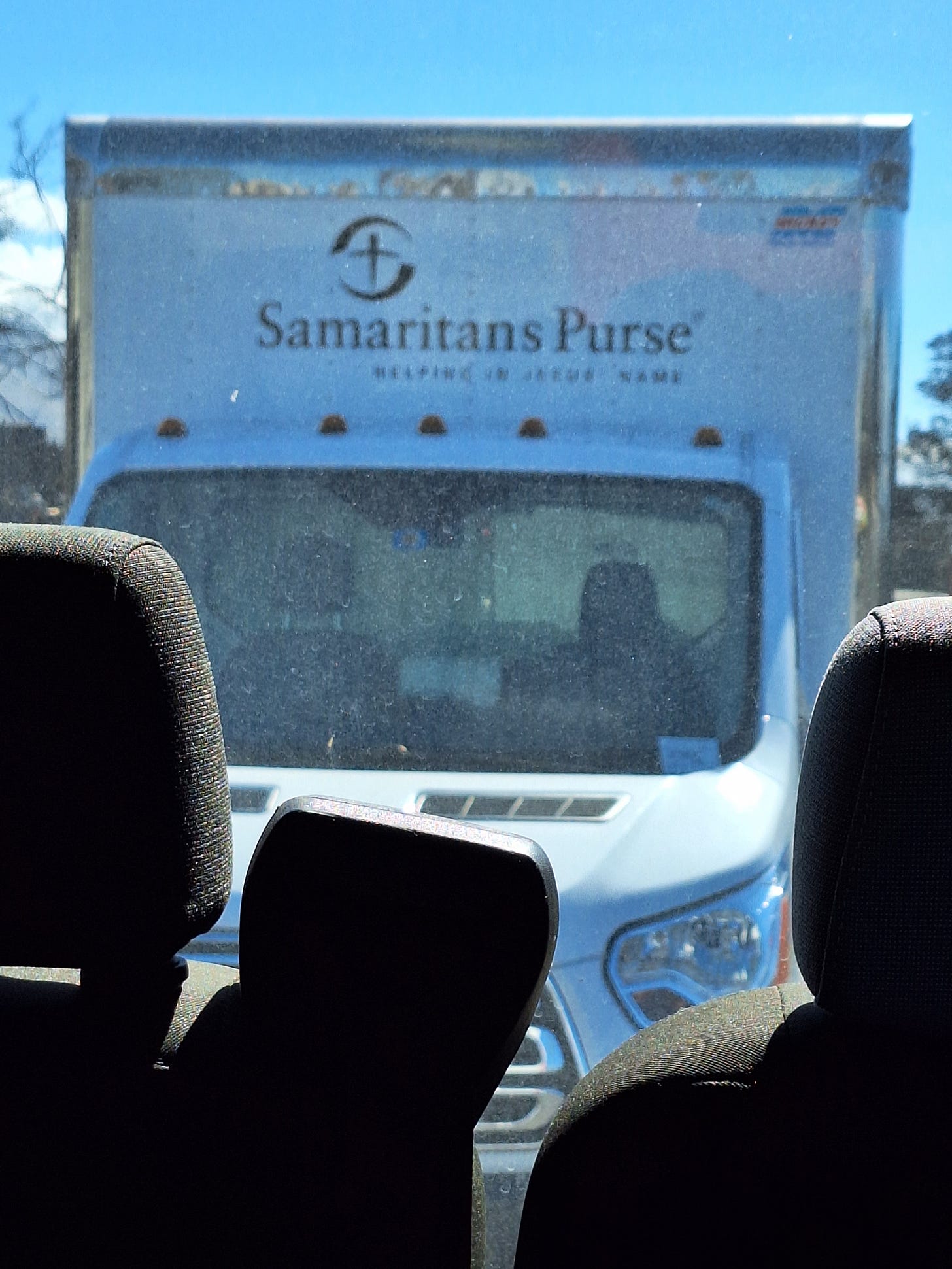
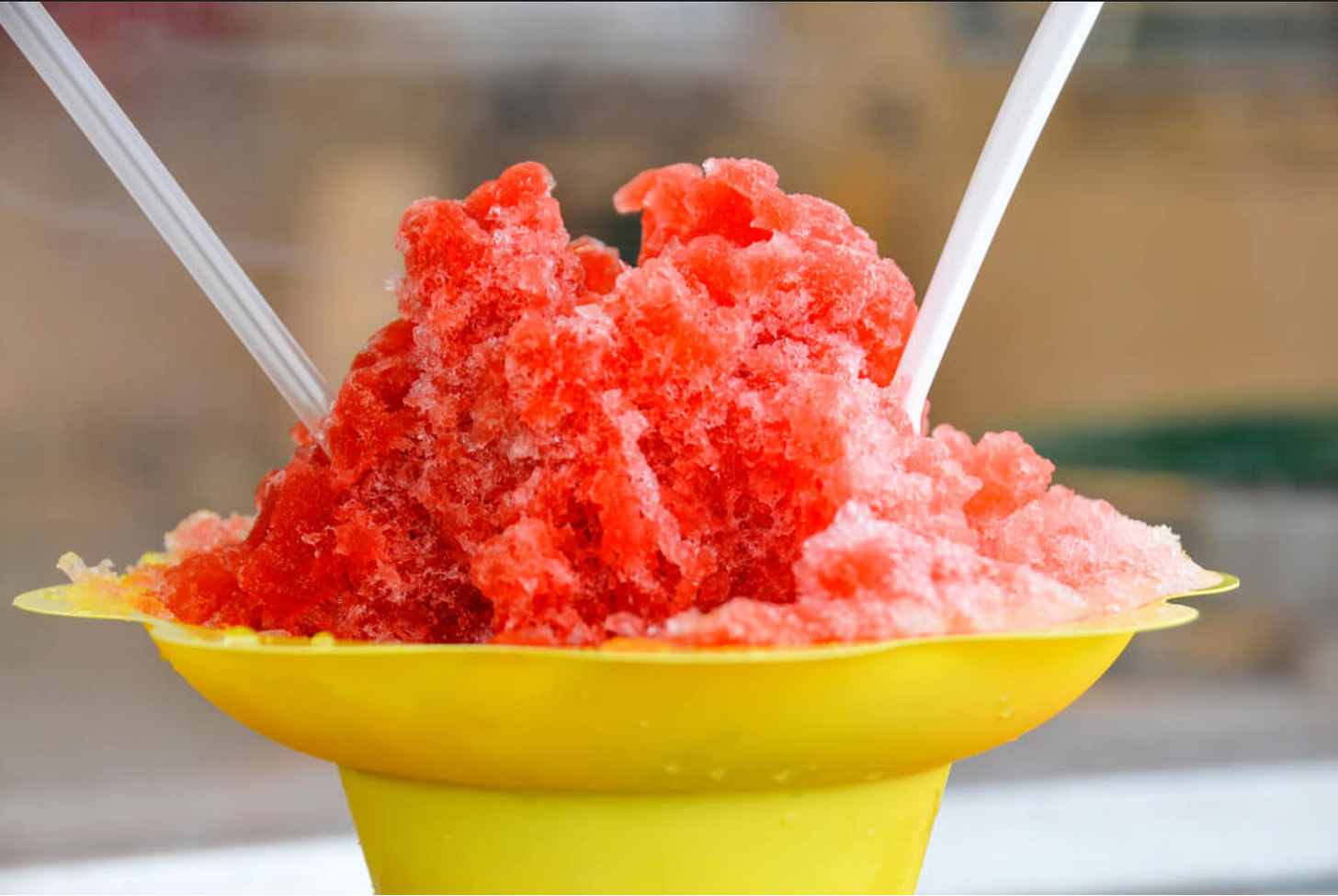
So beautiful, my lovely friend. Thank you for all you do! I love you.
Thank you for writing about this. It is fascinating, and I did not realise that volunteers did such great work at a time when people are so distraught at losing their homes.